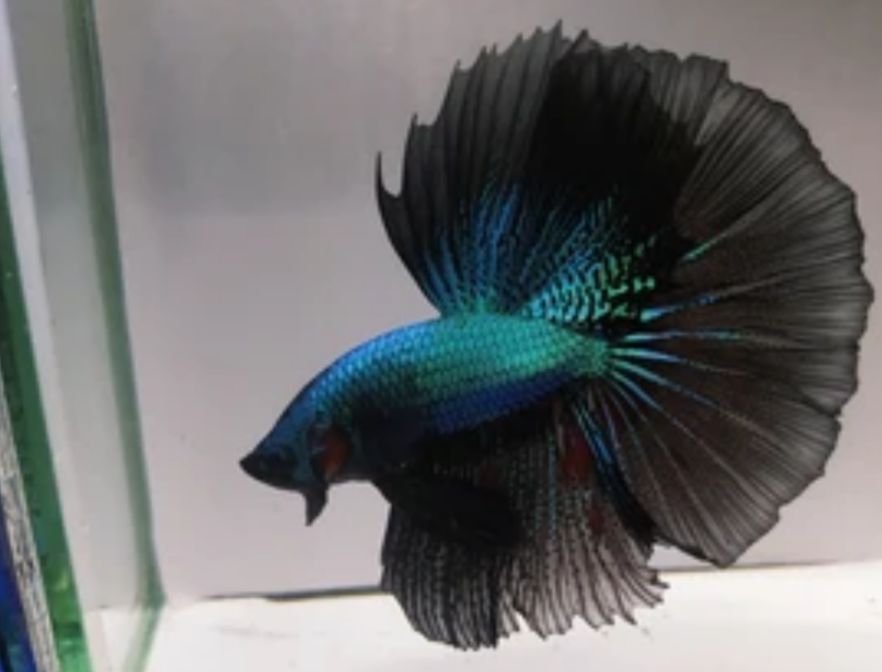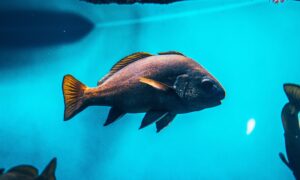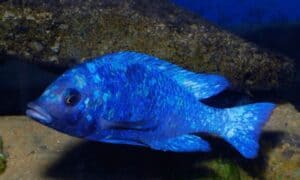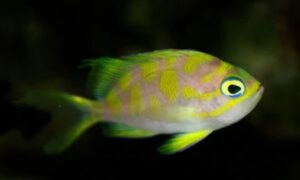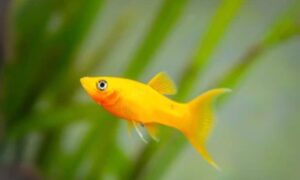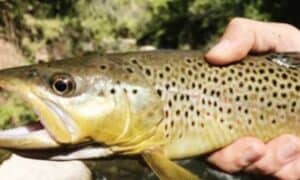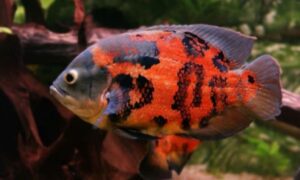Contents
Overview and Lifespan
Black orchid betta fish are distinctive and attractive tropical fish and they make ideal pets. Even though the majority of pet owners like to have only one black orchid betta fish in their home tank, those people who own larger tanks are able to safely house more than one black orchid male betta at a time.
However, it is crucial to follow some specific instructions to ensure your black orchid betta fish stays healthy and cheerful in your home tank.
Black orchid betta fish are distinguished by their unique black coloration spread all over their body and fins. They are distinctive because of their lengthy and flowing finnage. They are good-looking fish but they also do require special care than your typical betta fish because of their fragile finnage, which can easily be injured. The black orchid betta fish size is 3 inches which is approximately 8cm in length. Black orchid betta fish can live up to 3 years if you take good care of them and you provide them with proper water parameters.
Origin and Descriptions
Black Orchid male betta, which is also known as betta splendens, is the most basic variety of betta pets. They are indigenous to Thailand’s Mekong and Phraya rivers, where you can find them living in ponds, marshes, and also flood plains.
The black orchid male betta is a very similar species of fighting fish. In Thailand, it is called Plakad Fim or even ghost betta because of its beautiful black coloration. Though it is indigenous to Thailand, Laos, and Cambodia, it has also been introduced elsewhere through international trade and these days they are found in most tropical parts of Asia and Europe.
Black Orchids betta are very territorial and they have a fighting nature so they should be kept alone if possible. They will also fight with other Black Orchids as well as with other types of bettas. The best option is to keep them in your tanks by themselves, even though they can be kept with other non-truculent species such as guppies or mollies if you are keeping them at least 4 feet apart from each other.
A black orchid betta fish which is also called a black orchid is another type of those betta fish that was actually developed by an aquarist. It is a really good-looking fish and they have white and black markings also on its fins. The coloring also makes it very easy to see why an aquarist decided to create it in his home tank.
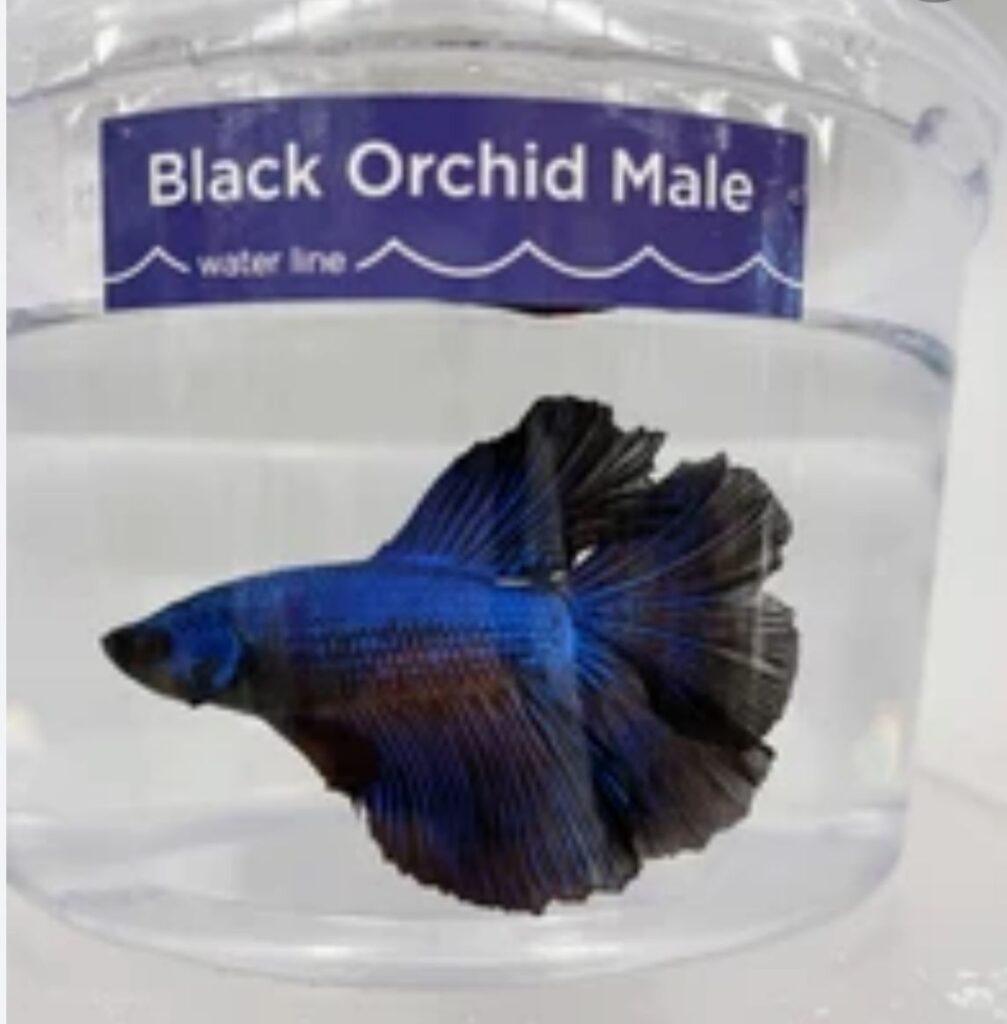
Species profile of Black Orchid Betta
Black Orchid Betta fish is a part of the family of Osphronemidae and are indigenous to Thailand. They are actually medium-sized species having a nature of fighting fish and they are also known as Siamese fighting fish. black orchid male betta have longer fins than female orchid betta and they are more colorful and beautiful in general.
Black Orchid Betta fish like a water temperature between the range 76-82 degrees Fahrenheit, but they can also survive in temperatures ranging from 68-86 degrees Fahrenheit. Because they are sensitive there are any changes in water quality. It is crucial that you use an aquarium filter to keep the water clean and your black orchid fish healthy.
You should feed them once daily with live food such as brine shrimp and daphnia, which are high in protein, though some of the aquarists choose to provide them every other day with dried pellets. You must need a tank divider if you want your black orchid betta fish to breed, and black orchid male betta will have a dispute with each other if they are kept together for too long.
Black orchid betta has been bred into many varieties such as black, blue, chocolate, green and red. But they are all still quite infrequent so you shouldn’t expect to find them at your neighborhood pet store any time soon!
Habitat and Tank care
Habitat
Black orchid betta lives in still, shallow water, which includes floodplains, marshes, and rice paddies, in the Mekong and Phraya river basins which are in Thailand.
Tank size and Tank Requirements
Due to the size of the black orchid betta, the minimum suggested size of your tank is 10 gallons.
The black orchid betta fish is a long-lasting specie of fish and they are able to live up to five years when they are in captivity. A normal size aquarium works fine for bettas but they need too much space so a huge tank will allow them to swim more easily. Bettas flourish in temperatures between the range of 72 and 78 degrees Fahrenheit, with moderately cold water at night.
The best pH level for your Black orchid betta water is 6.5, though when you are keeping it anywhere from 6.6 to 7, it will be accepted as well if necessary. Another thing you should remember is that Ammonia levels should always be 0 ppm, and nitrites should never surpass 5 ppm and nitrates should not transcend 20 ppm.
If ammonia or nitrites are discerned in your betta’s water then you should do a 25% water change instantly. Black orchid betta is actually carnivorous creatures that require protein to survive; their food diet must be comprised of mostly tiny insects such as brine shrimps and bloodworms.
Tank mates of Black Orchid Betta
Bettas should be kept alone. Also, they can be housed with other fish in your home aquarium, but they have a fighting nature and are so territorial that they will fight and damage or kill other fish in their close surroundings.
A black orchid betta fish will sometimes brawl with other fish species also. So in this situation, it is ideal to keep them in a tank of their own specie. They are also pugnacious towards each other, so you must plan on keeping only one per tank. Don’t get surprised if they instantly bite your finger as they are truculent. It’s something that must know how to deal with when keeping a black orchid betta fish specie as your pet.
But in another case, if you want to give your betta company, then some of the best tank mates are mollies and platys. These fish like to stay away from each other and they can live in good companionship with a black orchid betta fish. It is very crucial to have at least one bottom dweller with your black orchid betta this is because they like to jump out of their tanks when they are feeling unsafe or menaced. The bottom dwellers will be very helpful and will allow them to stay grounded so that they don’t injure themselves when they are jumping out of their home tanks.
Breeding of Black Orchid Betta Fish
Your black orchid betta fish should be put into a specific breeding tank slowly, so you can breed it. To avert territorial belligerence, you must separate the breeding tank from the fish’s permanent tank. Breeding is successful with Bettas that were bonded at a young age.
You should ensure that your black orchid Betta is healthy and in a good condition by feeding with a diet that is high in protein. After he gets familiar with his new breeding tank, the black orchid male betta will create a bubble nest on the surface of the water. To make sure that all eggs are shielded, the black orchid male betta will move them into a bubble nest after the process of spawning.
The black orchid male betta safeguards the nest until the eggs are hatched. The female specie should be moved back to her normal tank after the process of spawning. The male specie can be moved before or after the eggs are hatched, but in some cases, he might eat the newly emerged fry if left with them for a longer period of time.
Are they aggressive or peaceful fish?
It’s no secret that betta fish, particularly the male black orchid betta, can be fiercely possessive and violent. This means that you must take additional care to ensure the safety and welfare of the fish when introducing new fish to their aquarium.
It is generally advised to maintain betta fish alone or with other calm, non-aggressive species. This is due to the fact that betta fish are notorious for attacking and even killing other fish, especially those that have long tails or vibrant hues that contrast with their own. So be sure to choose wisely if you’re thinking about introducing other fish to your black orchid male betta’s aquarium. Give your betta fish plenty of room to spread out and call their own.
This entails furnishing the aquarium with plenty of hiding places and decorations to establish a natural partition between your betta fish and any possible tank companions. Remember that betta fish are notorious for being possessive of their area, so allow them plenty of room to swim and investigate. It is advised to introduce new fish to your betta’s aquarium gradually and cautiously if you do decide to do so. To ensure that new fish are healthy and won’t infect your betta fish with any diseases, you should quarantine them for a few days in a different aquarium.
When it’s time to introduce them to the primary tank, proceed gradually and pay careful attention to how they behave to ensure that everyone gets along.
Overall, it’s crucial to keep in mind that betta fish are violent and possessive animals by nature, so it’s best to lean on the side of prudence when introducing new fish to their aquarium. Your black orchid boy betta can, however, enjoy a happy and healthy life in their own little aquatic paradise with the right care and attention.
Care & Feeding
It’s very easy to take care of black orchid betta fish. The three most crucial components when you are taking care of these fish are clean water, a healthy diet with proteins, and good water parameters. Black orchid betta fish should be always kept in clean water every time. You should change your home tank water on a weekly basis to keep your fish happy and healthy.
Feed your black orchid betta with fresh vegetables and pellets about once a day or every other day to keep them well-nourished and happy. To make sure your black orchid stays fit, then you should give him enough room in his tank. You must Place some driftwood or other decorations around the tank so your black orchid betta fish can swim around freely and easily. It’s also best to set up an air pump in order to provide some current for your betta to swim against.
Parasites and Diseases
A few of the things which can be a strong threat to your black orchid betta health are parasites and diseases. While bettas are resistant to a number of diseases, many of them still die from the illness. Parasites can be more destructive; as they can affect your black orchid betta skin, fins, and even their internal organs. Fortunately, you can heal your betta with simple treatment; you should consult with a vet or you can either research online to learn how you can treat any parasites that may be likely of attacking your pet.
Make sure to also do regular water changes of your tank and provide plenty of clean, fresh water in order to keep your black orchid betta safe. Also, bettas love clean water so they will definitely enjoy it!!
Does Black Orchid Betta make good pets?
Nowadays Bettas have become very popular pets because of their wide variety of colors and they also have beautiful fins. But also owners purchase these fish without knowing how to take proper care of them which may be risky. If you think you are ready to take on a black orchid betta fish as a pet then you should follow all the necessary components described in this article for ensuring that your new pet is living in the proper surrounding and all of his nutritional needs are met. This will help in making your pet stay healthy and happy!
Breeding
Betta fish breeding may be a difficult yet rewarding process! To be successful, you must devote your complete attention and focus. You’ll need to prepare the male and female separately for a few weeks before introducing them. This entails giving them high-quality meals 2-4 times each day to provide them with the energy they require for mating.
During the mating season, the male will build a bubble nest as part of their habit. While some betta fish build these nests on a regular basis, others only build them when they’re ready to mate. The female will lay her eggs once the male and female have courted. The eggs will subsequently be collected by the male and placed in the bubble nest. He’ll keep an eye on the eggs until they hatch. So, get ready to put in some effort, but with proper preparation and care, you’ll soon have a beautiful batch of betta fish babies to enjoy!
To read more about other fish care and guide visit our Freshwater
Conclusion
- Black orchid betta fish are attractive tropical fish that make ideal pets, but they require special care because of their delicate finnage, which can be easily injured.
- These fish are distinguished by their unique black coloration and lengthy, flowing finnage. They are typically around 3 inches (8 cm) in length and can live up to 3 years with proper care.
- Black orchid male betta fish are a basic variety of betta pets that are indigenous to Thailand’s Mekong and Phraya rivers. They are also known as Siamese fighting fish because of their fighting nature.
- These fish are very territorial and should be kept alone if possible, although they can be kept with non-aggressive species such as guppies or mollies if they are kept at least 4 feet apart from each other.
- Black orchid betta fish prefer a water temperature between 76-82 degrees Fahrenheit and are sensitive to changes in water quality, so it is crucial to use an aquarium filter to keep their water clean.
- They should be fed once daily with live food such as brine shrimp and daphnia, which are high in protein, although some aquarists choose to provide them with dried pellets every other day.
- The minimum suggested tank size for black orchid betta fish is 10 gallons, and they prefer a pH level between 6.5-7 with ammonia levels at 0 ppm and nitrites below 5 ppm, and nitrates below 20 ppm.
- Black orchid betta fish should be kept alone, but if they are housed with other fish, they will fight and damage or kill other fish in their surroundings.
- Black orchid betta fish have been bred into many varieties, such as black, blue, chocolate, green, and red, but they are still relatively rare and may not be available at local pet stores.

